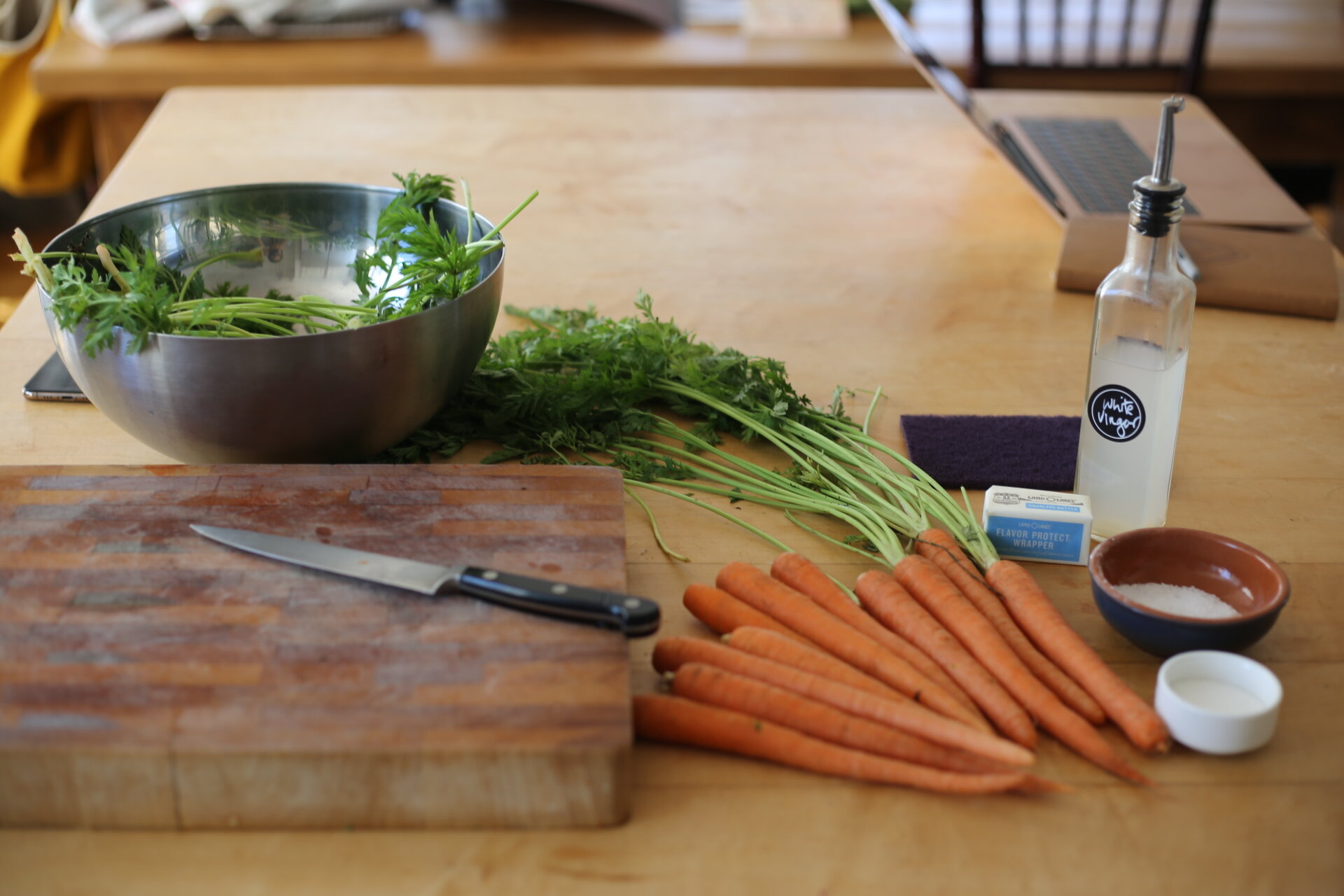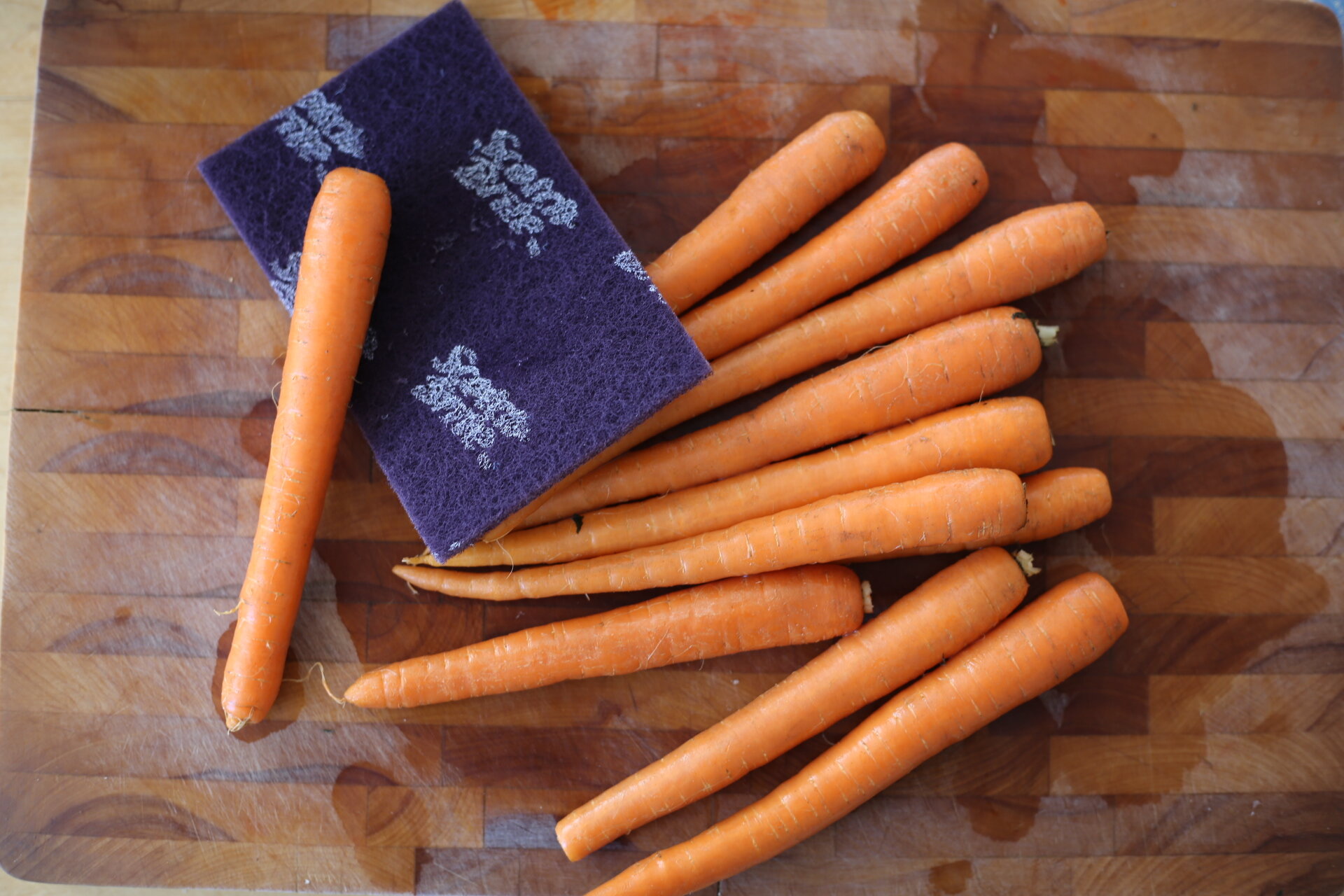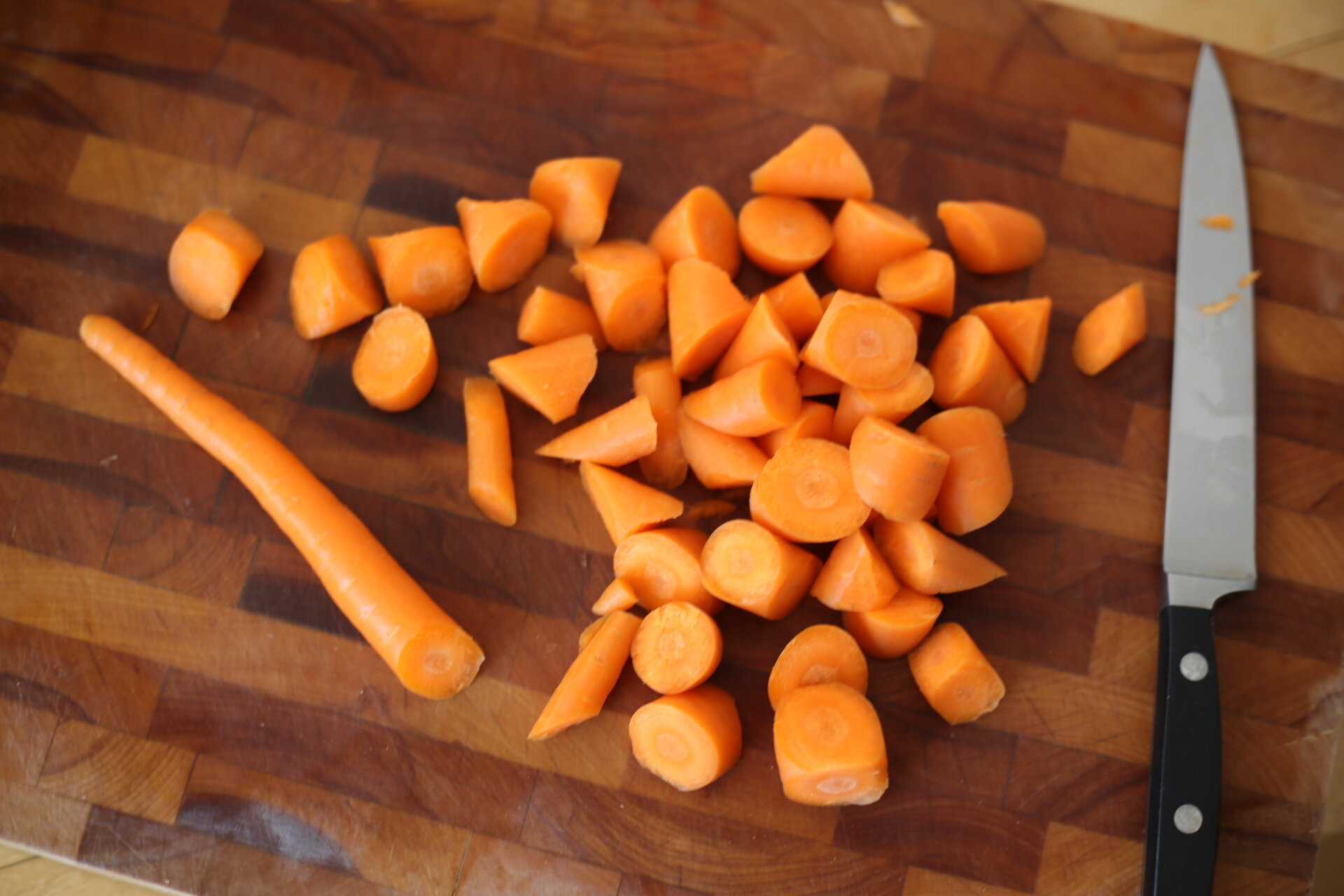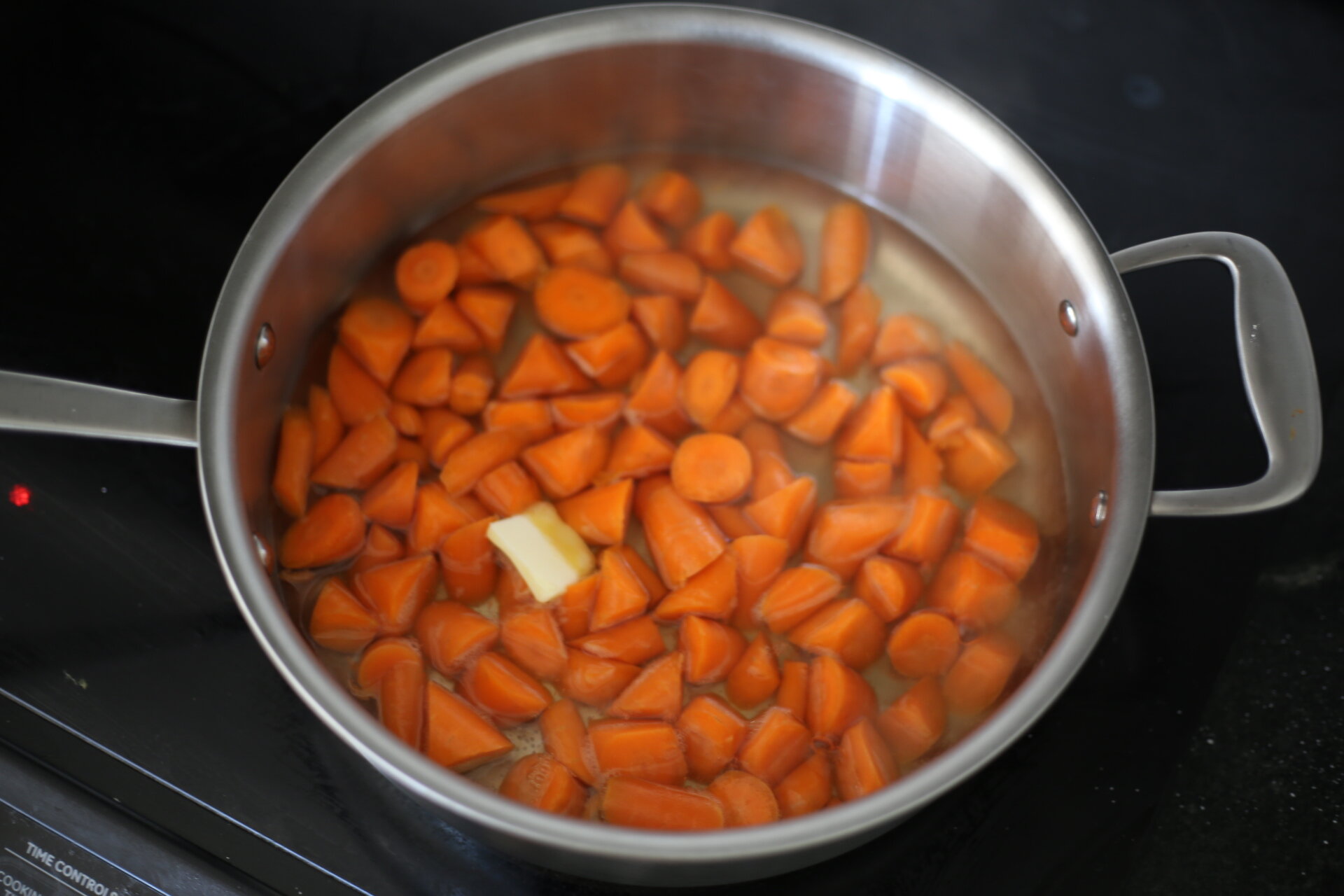TKMC Glazing: Carrots
The ladies at the daycare I went to as a kid really excelled at cafeteria fare. I remember, quite fondly, their sticky-sweet and cinnamon scented brown sugar glazed carrots. When I think of glazed carrots, this is what comes to mind. Chef Thomas Keller offers a more savory version in his MasterClass on glazing vegetables: just a hint of sugar to let the natural sweetness from the vegetables shine through. With less sugar, they can be served with a wide range of dishes. Here is his method.
INGREDIENTS (serves 4 as a side dish)
1 pound carrots (preferably the kind that still has the green tops attached), peeled, oblique cut
1 teaspoon butter (room temperature)
1 teaspoon sugar
water (enough to cover carrots)
2 drops white wine vinegar
Small handful parsley, chopped (for garnish)
Kosher salt
Prepare the carrots
Remove the tops from the carrots (you can use them to make pesto). Peel the carrots or remove the outer layer with a kitchen scrubby. Cut the ends and remove. Cut the carrots into an oblique shape (cut, turn, cut, turn). It’s important to keep the carrots the same size so they cook evenly.
Cook the carrots
Select a pan that is big enough to allow enough distance between the carrots. Add carrots to the pan in a single layer and swirl the pan around to create an even amount of space between them. Add sugar and enough water to barely cover carrots. Add butter and turn on the flame to high heat. Move the pan around throughout cooking to keep carrots evenly spaced so that each is individually glazed. When reduction is nearly complete, check for doneness. Chef Keller likes root vegetables to have very little resistance to the tooth without being mushy. If the vegetables are still too firm, you may add slightly more water and cook until the desired texture is achieved. Turn down the heat to medium and cook until finished. You’re looking for the butter to emulsify and the liquid to form a shiny glaze. Cooking too much will result in oiliness. Cooking too little will leave the liquid milky-looking and watery.
Season the Carrots
When reduction is complete, add two drops of vinegar, toss carrots in the pan with chopped parsley. Plate and sprinkle with a few grains of finishing salt for a little crunch.
Key Takeaways
This method for glazing can be used for other vegetables such as parsnips, cipollini or pearl onions. If you reduce the glaze too much and there is brown caramelization at the bottom of the pan, add a little bit of water and reduce it again.
Cut the vegetables the same size and allow enough space between the carrots to allow even cooking and glazing.
Vinegar helps emulsify the fat and water along with acting as a seasoning agent.
This is a more savory style but you can add more sugar and butter to suit your taste for a sweeter style glaze. Maybe even substitute a portion of the poaching water for orange juice.







